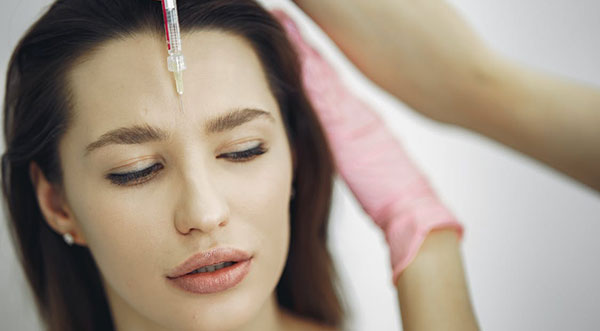6 Common Myths About Botox to Stop Believing, According to Experts
By Space Coast Daily // August 11, 2021

Botox injections are very notorious for their ability to reduce the presence of facial wrinkles and fine lines in both aging men and women in their 30s.
However, despite these, along with its other therapeutic uses, people have been wrongly associating this product with the mishandlings done by unlicensed and unknowledgeable practitioners that took advantage of the people’s shallow understanding of the product.
So, in order for you to have a better perception of Botox injections, here are 6 myths that are scientifically proven false that you have to know.
Myth #1: Botox Will Make Your Face Look Frozen
It has been a common notion that Botox will make your face look frozen. This statement is a myth if you have your cosmetic treatments done by a licensed professional who knows what he is doing.
According to Mr. Giovanni Ferrando, an experienced consultant plastic and reconstructive surgeon from London, the unnatural look results from the inability of one person to carry out the Botox procedure.
If the practitioner is not well versed with the dosing and the intensity of the dosage, or not a licensed doctor or surgeon for this matter, you would clearly have trouble with the credibility of the individual doing the procedure.
In essence, a specialist who performs this kind of procedure needs to have ample knowledge regarding the facial anatomy and is capable of telling the after results once it has been injected.
Hence, the person doing the procedure would really tell a lot whether you will achieve the promised youthful face or the opposite.
Myth #2: Cosmetic Injections Are Unsafe And Very Painful
Cosmetic injections are undoubtedly safe and dermatologists and cosmetic surgeons have devised numerous ways in order for people not to feel any discomfort during any procedures.
Although botulinum toxin can be lethal, small doses of it are relatively safe and are used in Botox application procedures.
According to the US Food and Drug Administration (FDA), between 1989 and 2003, there were only 36 recorded cases of adverse effects of botulinum toxin associated with cosmetic use. Additionally, thirteen of these cases had more to do with the condition than the actual drug itself. This has led scientists to speculate that cosmetic application of Botox carries lesser risks than its therapeutic version where the dosing is relatively higher.
While in contrast to the claim that cosmetic injections are very painful, practicing professionals claim that with the right employed practice before, during, and after the procedure, problems would be less likely to happen.
Myth #3: Once You Start, You Can’t Stop
Depending on the context, Botox can be either for permanent use or for temporary modifications only.
If the Botox is used for therapeutic purposes, the use of this product is for a long-term basis or until symptoms of a particular medical issue are no longer affecting the patient.
Contrarily, when used for cosmetic modification purposes, it is purely based on the users’ discretion since the effect of Botox only lasts for around six months. Now, after the period, the user can decide whether to continue or not.
Myth #4: Botox Is Only For Wrinkles
No, Botox is not just for wrinkles, rather it is used for the treatment of various types of medical issues as well.
Botox uses a toxin that inhibits muscle movement. This particular toxin is produced by microbes that cause botulism. Botox injections work by blocking specific chemical signals coming from nerves. These signals are the ones that trigger muscles to contract.
Botox is used for some medical issues like lazy eye, muscle contractures, cervical dystonia, chronic migraine, hyperhidrosis, eye twitching, and bladder dysfunction. This makes it clear that Botox is not used only for the treatment of wrinkles
As a matter of fact, after being used in the world war, it was first used in the 1960s to treat medical issues, and later on, in the late 1990s, it was developed as a non-invasive treatment for wrinkles.
Myth #5: Having Botox Will Affect The Body
Botox will not negatively affect the body of one individual. This is only true if the Botox injection procedure is done by a licensed professional.
Botox positively affects the body in the sense that it is considered as a treatment for an underlying muscular condition and a cosmetic treatment to correct wrinkles and other facial deformities caused by aging.
It is only considered life-threatening if it is improperly mishandled and administered in large volumes.
Although there are risks, complications caused by botulinum toxins usually have around six months before they disintegrate.
Myth #6: It’s Only For Women And Aesthetic Reasons
Contrary to popular belief, Botox is not only for women, and it is not only for aesthetic reasons either.
Although according to the American Society for Aesthetic Plastic Surgery, women between the ages of 19 to 34 that undergo the particular cosmetic procedure have risen by 41% since the year 2011, it is also undeniably true that the percentage of men turning into Botox for cosmetic purposes has reached 10% of the total user. After all, men get old too.
On the other hand, as many are hyped to get their fine lines and wrinkles to be straightened up, Botox has more therapeutic uses than in the industry of cosmetics. These therapeutic uses include treatment for neck and shoulder pains, excessive sweating, migraines and headaches, involuntary blinking, and the like.
As it is presented, the uses of Botox injection go beyond the improvement of facial aesthetics.
The Truth About Botox
As you already know some of the false claims against botulinum toxin, you might already be thinking about considering Botox treatments. However, you should always bear in mind that it should be your number one priority to look for a licensed medical professional.
Having a licensed doctor do the job would definitely cost you some bucks but if you look at it closely, unlicensed practitioners may be cheaper at first however, the risk of having complications would probably take a toll much more expensive than what you would pay for the licensed doctor.
So, it is a practical decision to consult professionals regarding the risk and every safety measure that should be done in order to minimize the problems that might happen.












